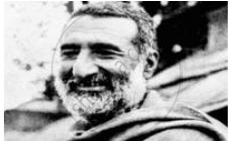Advertisements
Advertisements
प्रश्न
Gather additional information along with photographs about the work of the following personality in the Civil Disobedience Movement and exhibit it in the class.
Khan Abdul Gafar Khan:
उत्तर
KHAN ABDUL GAFFAR KHAN:

Khan Abdul Ghaffar Khan was a Pashtun independence activist who worked for the freedom of the country. He was a political leader with a nonviolent method. He was a close associate of Mahatma Gandhi and worked extensively with him in the struggle for freedom. His main aim was to form a united and secular India. He founded the Khudai khidmatgar or Servant of God. This organization formed over 1 lakh members and became an important opposition force for the British army. Through strikes, protests, and peaceful marches, they were able to achieve some success and became dominant in the field of politics. He had also participated in the Salt Satyagraha with Gandhiji, but in the year 1930 he was arrested during the protest arising out of the same.
He was a close partner of the Indian National Congress as well as other visible leaders. He was a respected member, but he sometimes disagreed with Gandhiji and his policy. For instance, in 1931, when Congress offered him the presidency of the party, he refused by saying that he was just a simple soldier who wanted to serve. He was a major member of the party for many years but resigned in 1939 because of his differences with the party's war policy. He joined Congress again when the World Policy was revised. He had also worked extensively for the rights of women in society for the same. He strongly opposed the partition of the country but was accused of being anti-Muslim by some politicians and was physically assaulted in 1946.
संबंधित प्रश्न
With reference to the National Movement from 1930 to 1947, answer the following :
State any three features of the Programmed of the Civil Disobedience Movement launched in 1930.
______ organised the Round Table Conference in London.
Answer the following question in 25 to 30 words.
Why did Gandhiji decide to break the Salt Act to begin the satyagraha all over the country?
Plot on an outline map of India ,the places mentioned in the chapter where the Civil Disobedience Movement took place.
When and by whom w as the Civil Disobedience Movement launched?
Who is popularly known as the Frontier Gandhi?
Mention any two events which led to the Civil Disobedience Movement of 1930.
State any three recommendations of the Simon Commission.
Or
Mention any two recommendations of the Simon Commission.
State four recommendations of the Nehru Report.
Gather additional information along with photographs about the work of the following personality in the Civil Disobedience Movement and exhibit it in the class.
Babu Genu:
